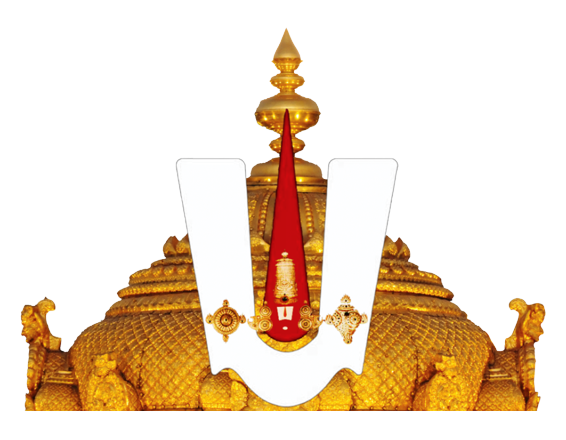Experience the majestic Seeveli Procession at Guruvayur Temple, a sacred ritual featuring caparisoned elephants, divine music, and Vedic chants. Learn about its historical significance, rituals, best viewing spots, and spiritual benefits. Discover why this daily procession is a must-experience event for devotees.

The Seeveli procession at the Guruvayur Temple is a captivating ritual that embodies the rich cultural and spiritual heritage of Kerala. This daily ceremonial parade, featuring caparisoned elephants and traditional music, offers devotees a profound connection to the divine. In this article, we delve into the significance, rituals, and unique aspects of the Seeveli procession that make it a cherished tradition at Guruvayur.
Table of Contents
Historical Significance of the Seeveli Procession
The origins of the Seeveli procession are deeply rooted in the temple’s history and the broader cultural practices of Kerala. Historically, processions have been integral to temple rituals, symbolizing the movement of the deity among devotees, thereby sanctifying the surroundings and the community. At Guruvayur, the Seeveli procession has evolved over centuries, maintaining its traditional essence while adapting to contemporary times.
Seeveli Procession: A Visual Extravaganza
The visual grandeur of the Seeveli Procession is an attraction for both devotees and tourists. Some of its unique highlights include:
1. The Leading Elephant and Thidambu Procession
The lead elephant in the procession carries the Thidambu, a sacred replica of the idol of Lord Guruvayurappan. This symbolizes the presence of the deity in the midst of His devotees.
- The lead elephant is carefully chosen based on its height, discipline, and experience in temple rituals.
- The decorative ornaments (Nettipattam), golden headgear, and silk coverings on the elephant add to the majestic visual appeal of the procession.
2. Traditional Music and Chants
The entire procession is accompanied by soul-stirring temple music, including:
- Chenda Melam (drumming ensemble), producing an electrifying rhythm that fills the temple grounds with divine energy.
- Nadaswaram (wind instrument), played alongside the drums, enhancing the spiritual ambiance.
- Vedic Hymns are recited by temple priests, adding a sacred vibrational energy to the surroundings.
3. The Path of the Procession
The Seeveli procession follows a fixed route, circling the inner sanctum three times before concluding at the main entrance.
- The three circumambulations (Pradakshinas) symbolize devotion and surrender to Lord Krishna.
- Each round represents different aspects of spiritual life – birth, life, and liberation.
The Role of Elephants in the Seeveli Procession
Elephants have been an integral part of Kerala’s temple culture, especially at Guruvayur Temple, which is famous for its elephant sanctuary at Punnathur Kotta.
1. The Special Bond Between Guruvayur Temple and Elephants
The temple has historically been home to several legendary elephants, including Guruvayur Kesavan, the most revered elephant in the temple’s history.
- Elephants used in the Seeveli procession are treated with utmost care and devotion.
- They are offered special food, including rice balls, coconut, and jaggery, before the procession.
2. The Rituals Performed Before the Procession
Before participating in the procession, the elephants undergo a sacred cleansing ritual:
- Oil Massage (Kesha Shuddhi): Elephants are given a traditional Ayurvedic oil massage to keep them healthy and calm.
- Decorations & Adornments: The temple staff carefully adorn the elephants with golden caparisons, silk garments, and bells.
The Rituals of the Seeveli Procession
The Seeveli procession is meticulously organized, reflecting the devotion and discipline of the temple authorities and participants. Key elements include:
- Thidambu: A sacred replica of the main deity, Lord Guruvayurappan, is placed on the lead elephant during the procession.
- Circumambulation: The procession involves three circumambulations (pradakshina) around the sanctum sanctorum, symbolizing the cosmic cycle and the omnipresence of the deity.
- Traditional Music: The rhythmic beats of chenda (drums) and the melodies of nadaswaram (wind instrument) accompany the procession, enhancing the spiritual ambiance.
- Caparisoned Elephants: Elephants adorned with decorative coverings and ornaments add grandeur to the procession, reflecting Kerala’s cultural affinity with these majestic animals.
Daily Schedule and Variations
The Seeveli procession is conducted thrice daily, each with its unique significance:
- Morning Seeveli: Conducted after the early morning poojas, symbolizing the start of the day’s spiritual activities.
- Afternoon Seeveli: Held post-uchapooja (midday pooja), serving as a reminder of the deity’s continual presence and blessings.
- Evening Seeveli: The most elaborate of the three, performed after the athazha pooja (night pooja), marking the conclusion of the day’s rituals.
Each procession varies slightly in its rituals and scale, offering devotees multiple opportunities to participate and receive blessings.
Unique Aspects of the Guruvayur Seeveli Procession
Several features distinguish the Seeveli procession at Guruvayur:
- Elephant Participation: Traditionally, multiple elephants participate in the procession. However, due to recent directives, the number has been limited to ensure safety and compliance with regulations. timesofindia.indiatimes.com
- Vilakkumadam Illumination: The temple’s vilakkumadam (a structure with numerous oil lamps) is illuminated during the evening Seeveli, creating a mesmerizing visual experience.
- Devotee Involvement: Devotees actively participate by singing hymns, offering prayers, and sometimes accompanying the procession, fostering a sense of community and shared devotion.
Spiritual Significance
Participating in or witnessing the Seeveli procession is believed to confer numerous spiritual benefits:
- Divine Blessings: The presence of the deity among devotees is considered an auspicious event, bringing blessings and positive energy.
- Cultural Connection: The procession serves as a living tradition, connecting participants to the rich cultural and religious heritage of the region.
- Inner Peace: The harmonious blend of music, movement, and devotion creates a serene atmosphere conducive to meditation and inner peace.
Practical Tips for Visitors
For those planning to experience the Seeveli procession:
- Timing: Arrive at the temple well before the scheduled procession times to secure a good viewing spot.
- Dress Code: Adhere to the temple’s dress code, which typically requires traditional attire.
- Respectful Conduct: Maintain decorum by refraining from disruptive behavior and following the instructions of temple authorities.
- Photography: While capturing memories is encouraged, ensure that photography is permitted and does not interfere with the sanctity of the rituals.
The Seeveli Procession During Festivals
While the Seeveli procession is held daily, it reaches a grander scale during major festivals like Guruvayur Ekadasi and Vishu.
1. Guruvayur Ekadasi
- The Ekadasi Seeveli is the grandest of all, with a longer route and more elaborate decorations.
- Thousands of devotees gather to witness the deity’s grand procession under dazzling lights.
2. Vishu Festival Seeveli
- The Vishu festival marks the Kerala New Year, making the Seeveli especially significant.
- Devotees believe that seeing Lord Guruvayurappan on this day ensures good fortune for the rest of the year.
Devotee Experiences and Testimonials
Many devotees describe witnessing the Seeveli procession as a life-changing experience. Here are some personal testimonials:
1. A Devotee’s Journey from Mumbai
“I had heard about the Seeveli procession for years, but witnessing it in person was an out-of-body experience. The elephants, the divine music, and the glowing lamps around the temple made me feel closer to God than ever before.” – Suresh Nair, Mumbai
2. A Foreigner’s Spiritual Awakening
“As a tourist from the USA, I visited Guruvayur out of curiosity. But when I saw the golden deity being carried on an elephant, surrounded by hundreds of chanting devotees, I felt an energy like never before. It was a true moment of divine presence.” – Amanda Cooper, California
How to Experience the Seeveli Procession at Guruvayur Temple
To make the most of your Seeveli experience, follow these practical tips:
1. Best Time to Visit
- The evening Seeveli is the most spectacular, with elaborate decorations and maximum participation.
- If you want a quieter experience, opt for the morning or afternoon Seeveli.
2. Where to Stand for the Best View
- Stand near the East Nada (main entrance) to get a clear view of the deity on the lead elephant.
- If you prefer a less crowded spot, try the inner sanctum area where the procession begins.
3. How to Book Special Darshan & VIP Viewing Areas
- Visit the Guruvayur Devaswom Board website to check availability for VIP darshan tickets.
- Special Seeveli viewing zones are sometimes available for elderly devotees and foreign tourists.
The Seeveli procession at Guruvayur Temple is not just a spectacle—it is a divine journey that transports devotees into a realm of devotion, music, and spiritual energy. The sight of Lord Guruvayurappan being carried on an elephant, illuminated by sacred lamps, and surrounded by the rhythmic beats of temple drums, is something every Krishna devotee should experience at least once in their lifetime.
If you are planning a visit to Guruvayur, make sure to witness the Seeveli procession—an event that will stay etched in your heart forever. 🙏
Author:
📖 Sri Ananth Kumar Iyengar (Expertise: Mythology and Historical Narratives)
📩 Email: [email protected]

